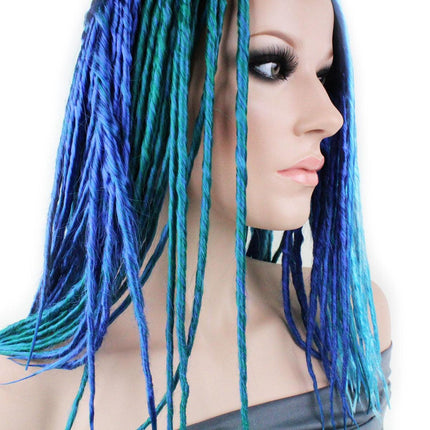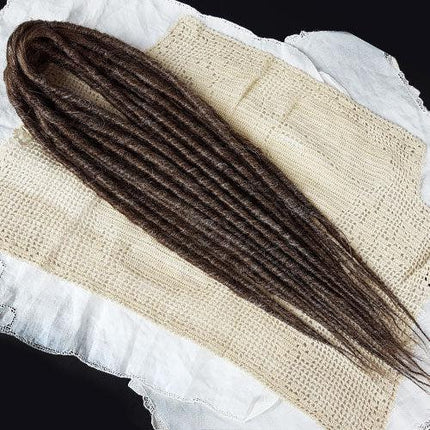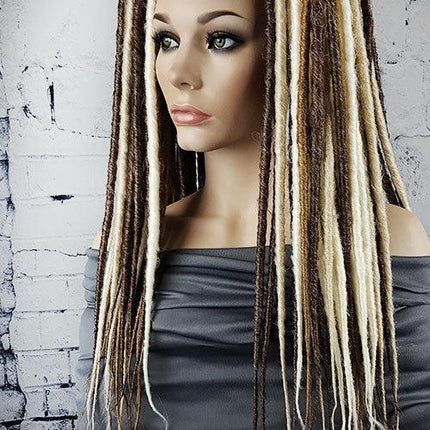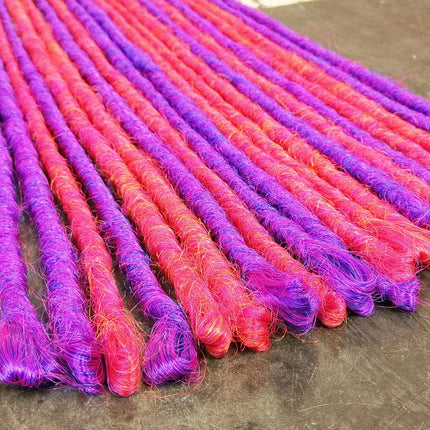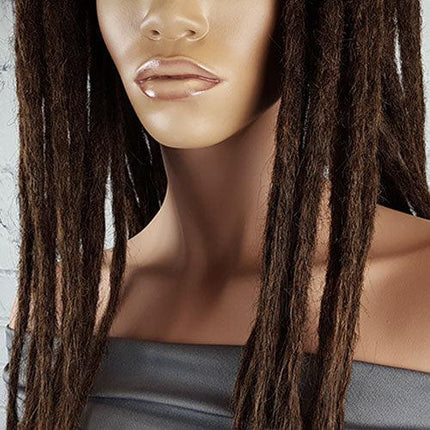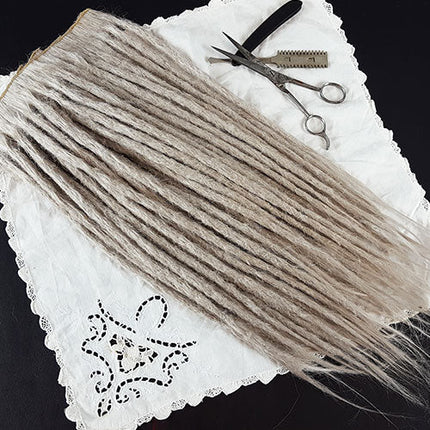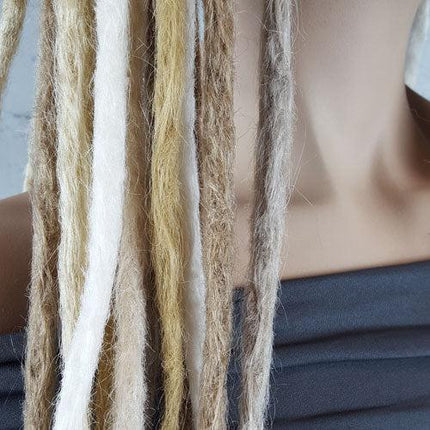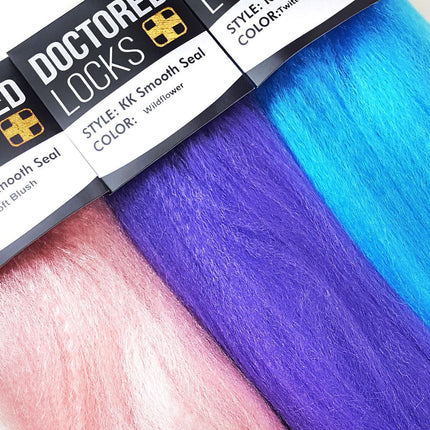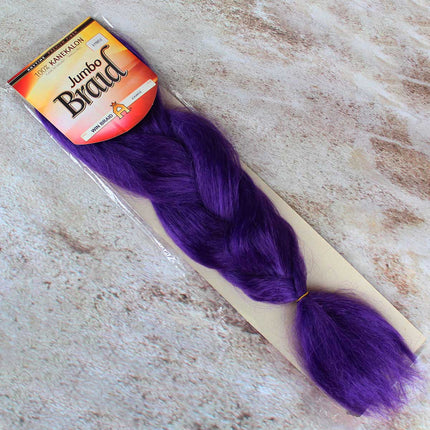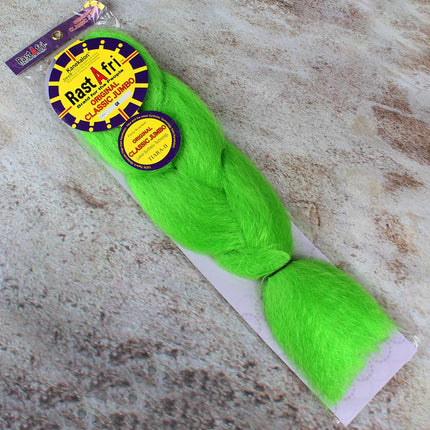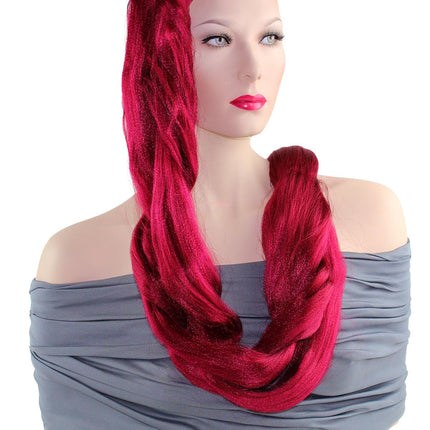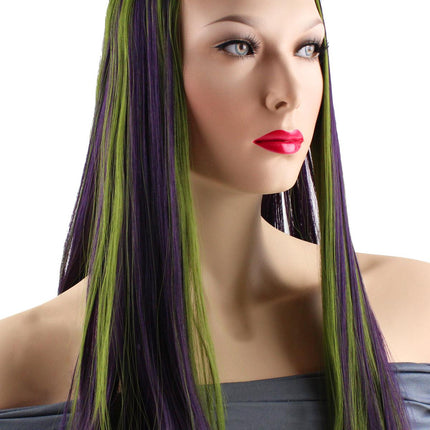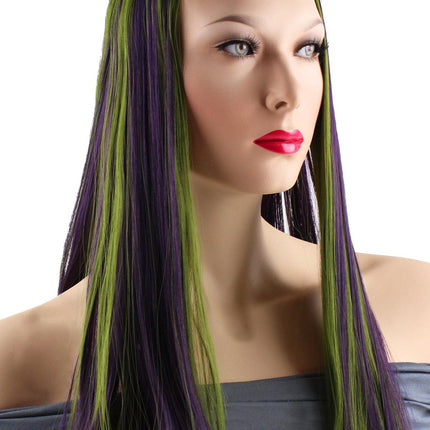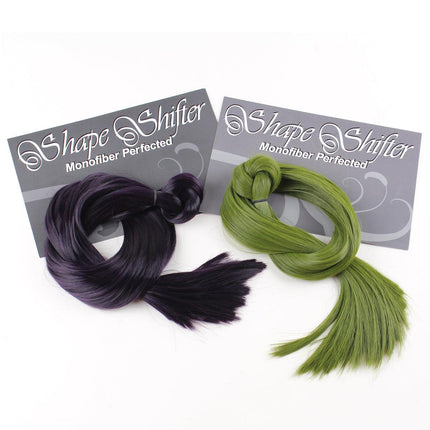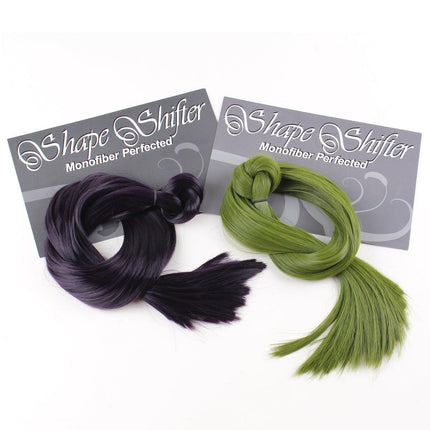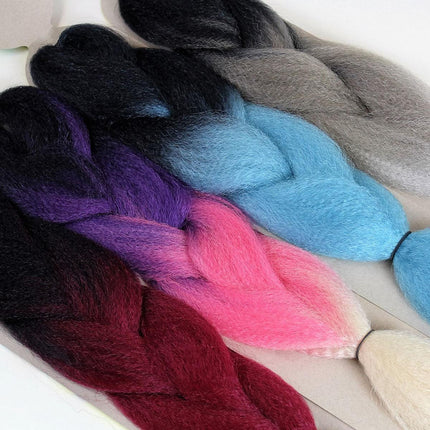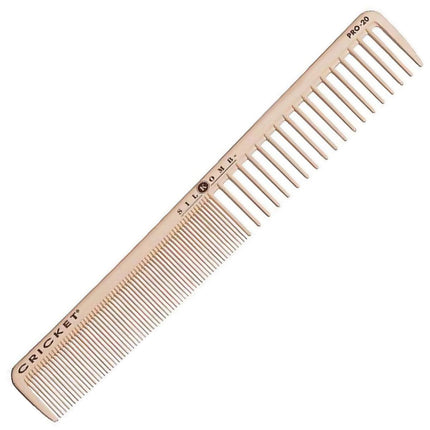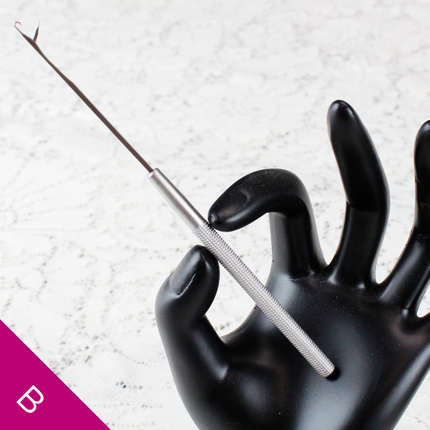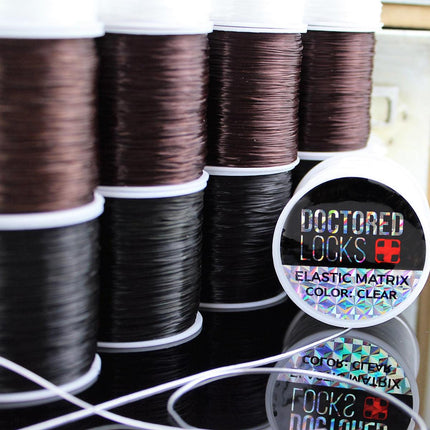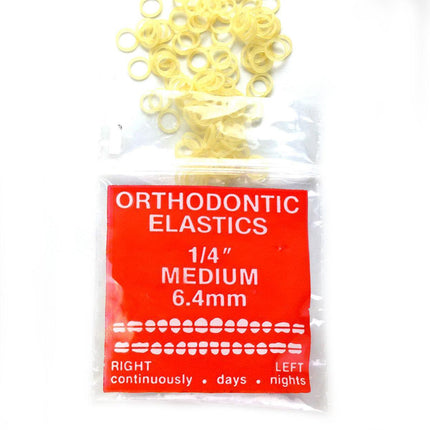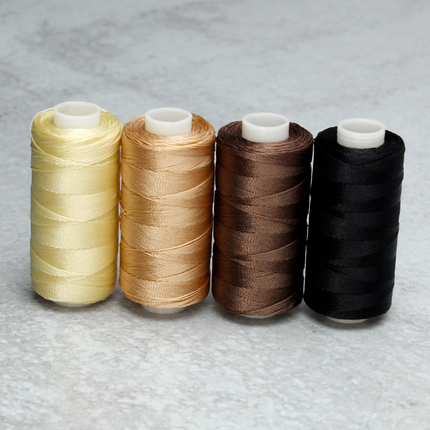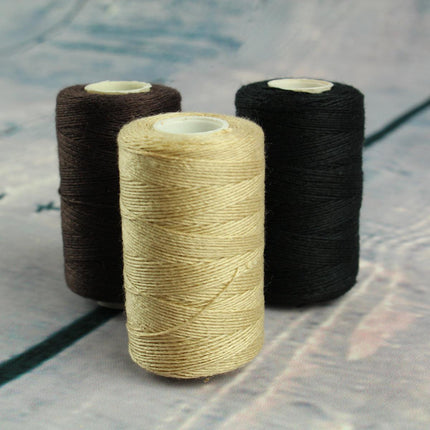DREADLOCKS & BRAIDING
Doctored Locks Dreadlock and Braiding Hair
Hello, Visionary Artist! We recognize that you're more than just a stylist – you're a catalyst for transformation, a creator of confidence, a weaver of dreams.
You don’t just change appearances; you enhance souls. That’s the essence behind our dreadlock and braiding hair collection, designed with your unique artistry in mind.
Exceptional Quality for Your Expertise
Our extensions are a testament to unparalleled craftsmanship. Each bundle is meticulously created for its gem-like colors and fiber sculpting properties. The result? Extensions that give you the creative tools to create any look you can imagine.
Designed for Creativity: The Art of Dreadlocks and Braiding
These hair extensions are specially made to complement the art of dreadlocks and braiding. They integrate seamlessly with natural hair, offering boundless creativity for intricate, stunning styles that speak volumes about your clients' personalities.
Empowering Transformations, Uplifting Spirits
Your artistry has the power to redefine not just hairstyles, but identities. With each new head of dreadlocks or braided design, your clients rediscover themselves, emboldened and rejuvenated.
This transformative experience is more than a hairstyle; it’s an uplifting journey that extends well beyond the salon.
TRANSFORMATIONS
Dreads and Braided Extensions: Hair Artistry Redefined
Ideal for Professional Stylists and Beginners Alike
Our hair extension collection for dreadlocks and braiding represent a revolutionary approach to hair artistry. These extensions are crafted from premium synthetic fibers, offering a blend of durability and a diverse aesthetic appeal.
Our synthetic extensions are a top choice for many professional stylists and DIY enthusiasts, as they are designed to be tangle free, respond to specific temperature ranges and come in a wide range of colors.
Efficient and Simple Installation
The extensions are designed to integrate seamlessly with natural hair, making them perfect for creating intricately detailed dreadlocks and braids for every festival, prom, wedding and daily wear.
Gentle Removal, Maintaining Hair Health
Our extensions are designed with the health of your client's natural hair in mind. When it’s time to switch styles, they can be easily removed without leaving any residue or causing damage, preserving the integrity of the natural hair.
These extensions offer versatility and longevity. This efficiency caters to both the stylist’s creative demands and the client's desire for a transformative hair experience.
SIMPLE INSTALLATION
Impeccable style and long-lasting results. Create stunning, protective transformations.
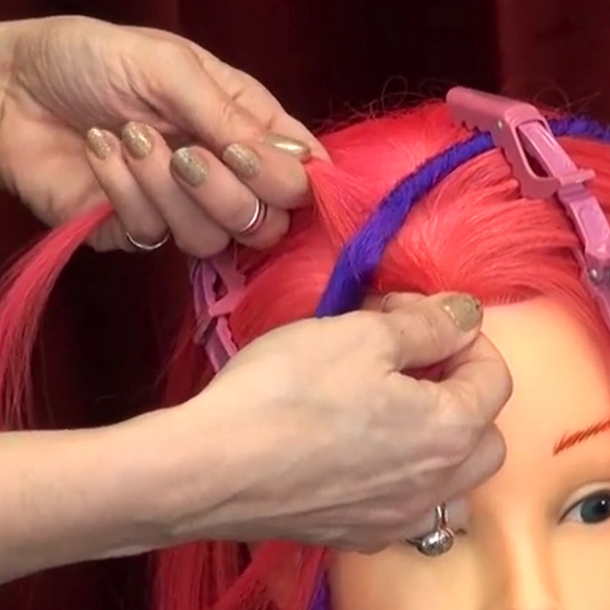
STEP ONE
Part a section of hair and split it into two. Lay the mid-point of the dread at center.
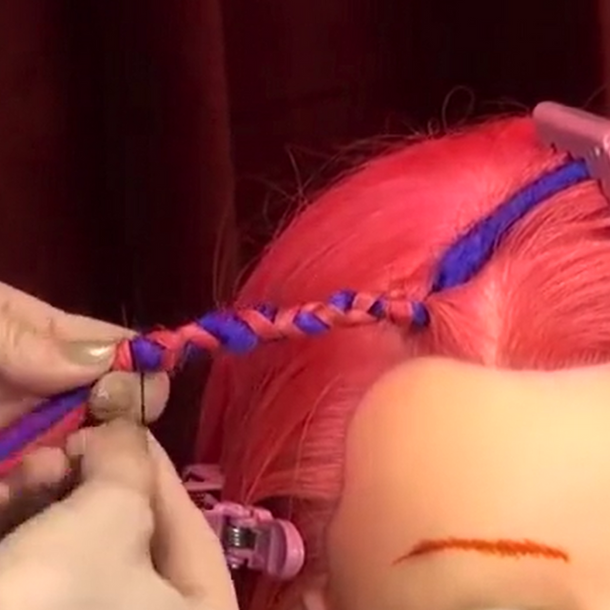
STEP TWO
Wrap the natural hair around the dread and braid to the ends of the hair.
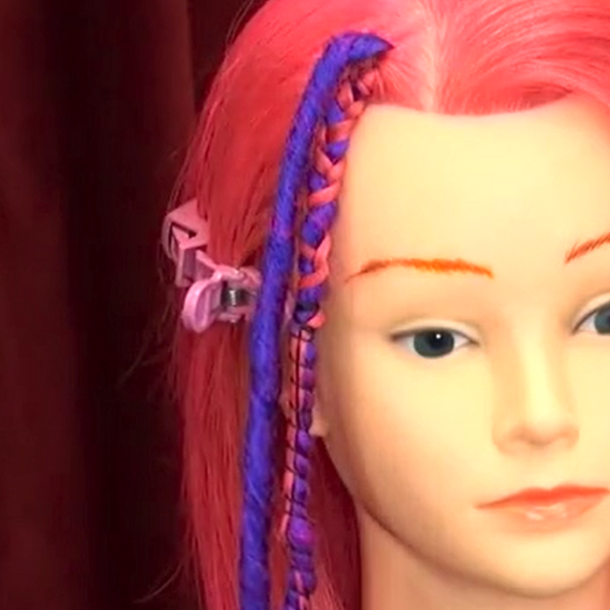
STEP THREE
Using rubber bands or elastic matrix thread, tie the ends to secure.
watch the steps now
See just how easy it is to create braid-in dreadlock styles!
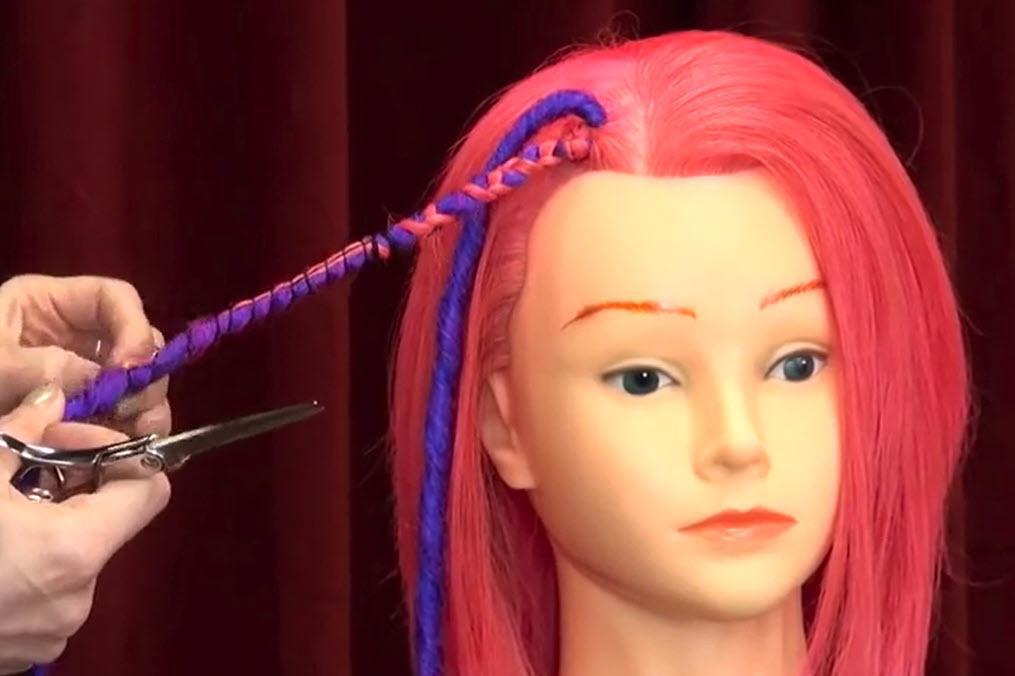
Dread and Braid FAQ
Dreadlock Extensions
Hair extension dreadlocks are dreadlock pieces that can be attached to natural hair to instantly achieve the look and length of dreadlocks without the long process of growing and matting the hair naturally. Here are the key differences between hair extension dreads and real, natural dreadlocks:
Creation Process:
- Hair Extension Dreadlocks: These are pre-made using synthetic or human hair fibers. They are crafted to mimic the appearance of naturally matured dreadlocks and can be attached to the hair using various methods such as braiding or clip ins.
- Natural Dreadlocks: These are formed by strategic grooming and allowing the natural hair to mat over a period of time. Natural dreadlocks can be created through techniques like backcombing, twisting, or the "neglect" method. These processes can take a long time but can be assisted with other techniques like "dread perms" where knots are chemically reinforced in the hair.
Time and Commitment:
- Hair Extension Dreadlocks: They offer a quick solution for those who want dreadlocks without the commitment. They can be installed relatively quickly, often in a few hours, and can be removed just as easily.
- Natural Dreadlocks: The journey to achieving natural dreadlocks requires a significant time commitment and a lot of patience. The maturing process of the dreadlocks is gradual and demands ongoing maintenance. Because this process is considered permanent, they are not removed easily.
Versatility and Flexibility:
- Hair Extension Dreadlocks: These provide versatility in terms of length, color, and style. You can choose different lengths and colors, and even remove them if you decide to change your look.
- Natural Dreadlocks: Once your natural hair has been dreaded, changing the length or color is more challenging and requires more effort. Removing natural dreadlocks often involves cutting them off and starting over.
Maintenance:
- Hair Extension Dreadlocks: Synthetic dreadlocks require no maintenance. They will need to be moved up in the natural hair every 6 to 8 weeks.
- Natural Dreadlocks: Require regular washing, drying, and re-twisting or palm rolling to maintain their appearance and health.
Texture and Feel:
- Hair Extension Dreadlocks: Depending on the material (synthetic or human hair), they can either mimic natural dreadlocks closely or have a distinctly different texture. Check out our line of backcombed (twisted) and crochet textures!
- Natural Dreadlocks: Have a unique texture that evolves over time, reflecting the individual’s hair type and the maturation process of the dreadlocks.
Hair extension dreadlocks are a convenient, versatile option for those who wish to rock dreadlocks without undergoing the natural dreading process. Extension dreads offer endless styling flexibility!
Installing extension dreadlocks, often referred to as synthetic or faux dreadlocks, involves a few steps. The method of installation can vary slightly depending on the type of dreadlock extensions and the desired outcome, but here's a general guide:
- Section the Hair: Start by dividing the natural hair into sections. Alternatively, you can work as you go by sectioning one row at a time, installing and working your way toward the top of the head. Use clips to keep the remaining hair out of the way.
- Attachment Method:
SE Braid-In Method: On SE (which stands for Single Ended) dreads, you will find a loop at the top. Your section will go completely or partially through this loop. The natural hair is sectioned into three parts and then braided down the exterior of the dreadlock. Secure the extension with a small elastic band.
DE Braid-In Method: DE (which stands for Double Ended) dreads have two tails with a center bend, rather than a single tail and a top loop like SE Dreads. With DE dreads, a natural hair section is parted into two. The DE is placed with its mid-center across the part. The natural hair crosses over the mid point. These two pieces of natural hair and one tail of the dread make up a three strands braid. The hair is braided down one side of the DE and then secured with an elastic band. - Repeat for All Sections: Continue this process for each section of the hair until all the dreadlock extensions are in place.
Important Considerations:
- Scalp Health: Be careful not to install the dreadlocks too tightly, as this can cause tension on the scalp and potentially lead to hair damage or loss.
- Quality of Extensions: The look and longevity of the style can be greatly affected by the quality of the dreadlock extensions. High-quality synthetic or human hair extensions usually provide the best results and experience.
Absolutely, dreadlock extensions can be effectively installed even on short hair. In fact, we have a tutorial video specifically designed for those with super short hair. This video will guide you through the process, demonstrating techniques and tips to ensure a successful installation of dreadlock extensions on shorter hair lengths.
This video is an excellent resource for anyone with short hair looking to explore the world of dreadlock extensions. It simplifies the process and ensures that even those with shorter hair can enjoy the transformation and style that dreadlock extensions offer.
Check out our tutorial section for more info!
"SE" and "DE" stand for "Single Ended" and "Double Ended," respectively, and they refer to two different types of dreadlock extensions.
1. SE (Single Ended) Dreadlock Extensions:
These extensions have a single dreadlock with a loop or similar attachment at one end.
The loop is used to attach the dreadlock to a section of natural hair.
SE dreadlocks can be preferred for a more natural appearance since one dreadlock comes from one section (as opposed to two dreads from one section as DE).
They are ideal for adding volume and length to existing dreadlocks or for creating new dreadlock styles in hair that isn't already dreaded.
2. DE (Double Ended) Dreadlock Extensions:
These extensions have two dreadlocks attached together at the top.
When installed, the two ends of the DE extension hang from the attachment point, effectively giving twice the amount of dread per extension compared to SE - thus sections are usually slightly larger to accommodate DE styles.
DE extensions provide more volume and length per extension and are often chosen for fuller, thicker looks.
They are highly efficient for achieving a dense, voluminous dreadlock styles.
Summary:
Both SE and DE dreadlock extensions come in various lengths, thicknesses, and colors, allowing for a range of styling options. The choice between SE and DE depends on the desired final look, the amount of volume required, and personal preference in terms of installation and wear.
Dreadlock extensions, both SE (Single Ended) and DE (Double Ended), will vary in their longevity based on several factors, including the material of the extensions, maintenance routines, and individual hair growth.
1. Lifespan of Dreadlock Extensions:
- Synthetic Dreadlocks: These typically last between 6 to 10 weeks when installed. The lifespan is typically dictated by how fast the natural hair grows. A set of extension dreadlocks can be reinstalled many times.
2. Can They Be Permanent?
- Sometimes, yes! If installed as a braided extension they will require maintenance, re-adjustment, or replacement over time.
- However, dreadlock extensions felted in at the ends of a wearer's naturally dreaded hair can be considered permanent. Since they are not installed at the root, as your natural hair grows, the extensions will not need to be moved up, tightened, or re-installed.
- We only recommend installing human hair for permanent methods. Just like your favorite sweater, synthetics left in for a year or more can be subject to sweater pilling.
Extension Braids
Braiding your hair, with hair extensions, is considered a protective style and a great way to manage your hair during grow out periods.
However, if not done correctly, braiding can damage your natural hair. Here are some key points to consider:
- Tension: Braids that are too tight can cause tension on the scalp, leading to a condition known as traction alopecia, where hair is pulled out from the roots. Take care to know your appropriate braiding tension. Braids that are too tight will need to be removed.
- Weight: Heavy hair extensions added to braids can pull on the natural hair, causing strain and breakage. It's important to use extensions that are an appropriate weight for your hair type.
- Duration: Keeping braids in for too long can also lead to damage. Over time, hair can become matted, and the scalp may become prone to build-up and neglect. It's generally recommended to not keep braids in for more than 8 weeks.
- Maintenance: Proper maintenance is crucial. This includes keeping the scalp clean and moisturized. This will help eliminate build up the can cause matting near the scalp.
- Installation and Removal: The way braids are put in and taken out can also impact hair health. Rough pulling or combing during installation or removal can cause breakage and damage to individual strands.
In summary, while braids can be a great protective style, it's essential to have them done correctly, not too tight or heavy, and to maintain them properly.
Yes, learning to braid hair can be quite manageable for beginners, although it does require some patience as you develop the muscle memory.
To help you in mastering various braiding techniques, we offer a wide range of tutorial videos. These tutorials are designed to guide you step by step, making the learning process smoother and more enjoyable.
Whether you're interested in basic three-strand individual braids or more complex styles like cornrows and crochet methods our tutorial section has you covered.
So, take your time, practice regularly, and soon you'll find that braiding becomes a natural and enjoyable skill.
Check out our tutorial section for helpful guides and tips!
Crochet braids are a type of hairstyle that involves crocheting hair extensions over a person's natural hair with a crochet hook or latch hook.
This technique is a popular method for adding microbraids and other textures that add length, volume, or visual interest to the hair.
Here's a brief overview of how crochet braids are typically done:
- Cornrowing the Natural Hair: The natural hair is first braided into cornrows. These cornrows serve as the foundation for attaching the extensions.
- Crocheting the Hair Extensions: Using a crochet or latch hook, the hair extensions (which are typically pre-looped or folded at the top) are threaded under the cornrows.
- Securing the Extensions: Once the extension top is pulled under the braid, the tails are fed back through the loop and cinched to the cornrow to secure it. This process is repeated across all the cornrows until the desired fullness and style are achieved.
- Styling: After all extensions are attached, they can be left as-is or further styled (cut, curled, twisted, etc.) as desired.
Crochet braids are favored for several reasons:
- Versatility: They allow for a wide variety of styles, from loose hanging styles to more intricate patterns.
- Protective Styling: They protect the natural hair from daily wear and tear and environmental factors.
- Low Maintenance: Once installed, crochet braids require very little maintenance if any. Keeping the scalp clean and an occasional shampoo rinse is all most styles require.
- Temporary: This method provides the versatility of changing styles without long-term commitment or potential damage to the natural hair.
Braiding hair, which is often used for styles like box braids, cornrows, and crochet braids, is incredibly versatile and can be used for a wide range of creative hairstyles. Here are some additional ways you can use braiding hair:
- Twists: Similar to braids, twists use two strands instead of three. Styles like Senegalese twists, Havana twists, or Marley twists are popular and use braiding hair for added length and volume.
- Faux Locs: Faux locs are a great way to achieve the dreadlock look without permanently locking your natural hair. Braiding hair is wrapped around sections of your natural hair and then twisted or sealed to form locs.
- Updos: You can create elegant updos like top knots, buns, or chignons with extra volume and drama using braiding hair.
- Ponytails and Pigtails: Add length and volume to your ponytails or pigtails. You can either wrap braiding hair around your existing ponytail or create a new one entirely from the braiding hair.
- Decorative Braids: Add decorative braids into your hair for a bohemian or romantic look. These can be small accent braids or larger, more intricate designs.
- Colorful Accents: Since braiding hair comes in a variety of colors, it can be used to add colorful streaks or highlights without dyeing your natural hair.
- Braided Headbands: Create a braided headband with braiding hair for a cute and practical hairstyle.
- Hairpieces: Some people use braiding hair to create elaborate custom hairpieces. Google "Hair Wars" - I can't even begin to explain.

